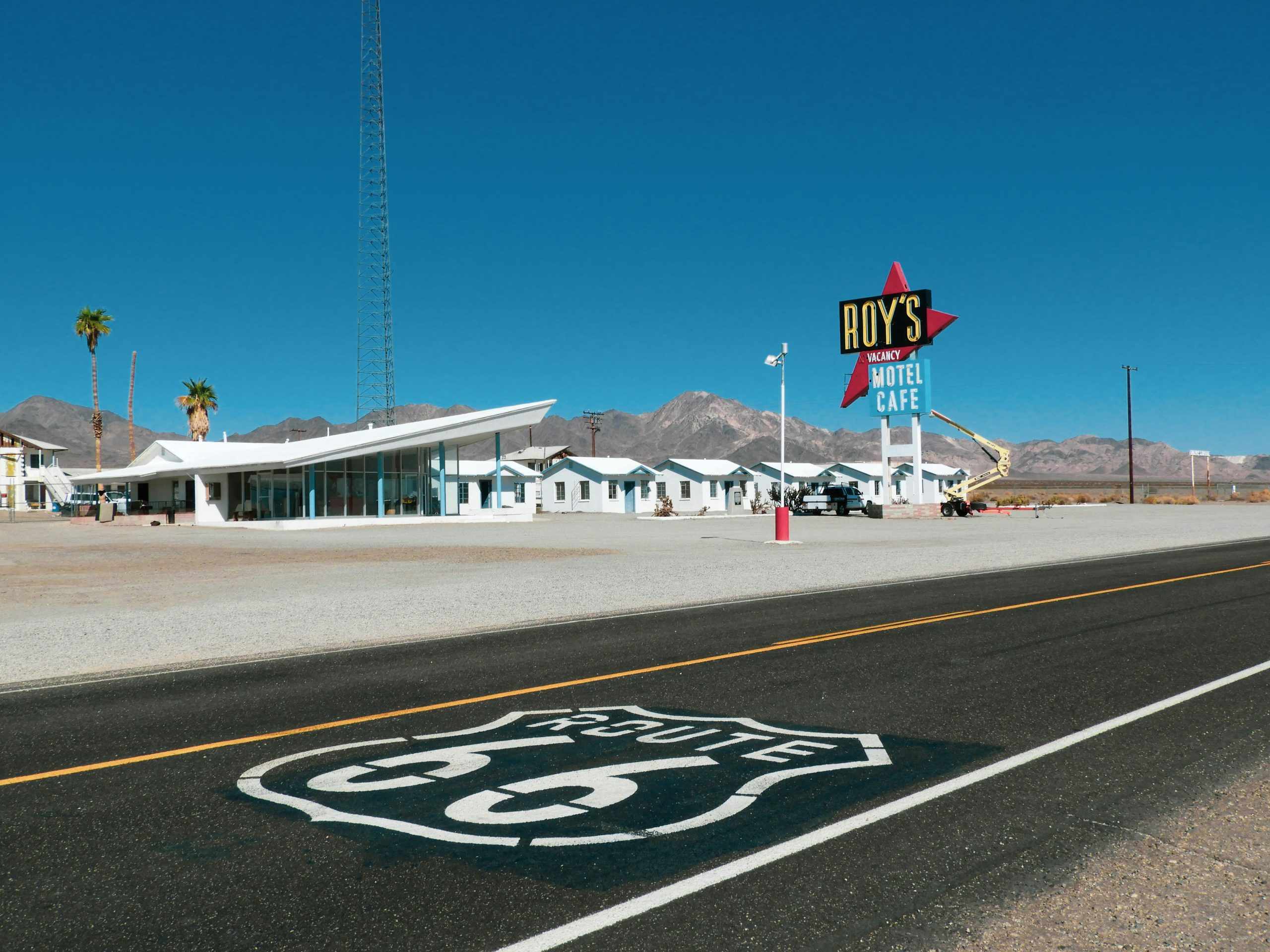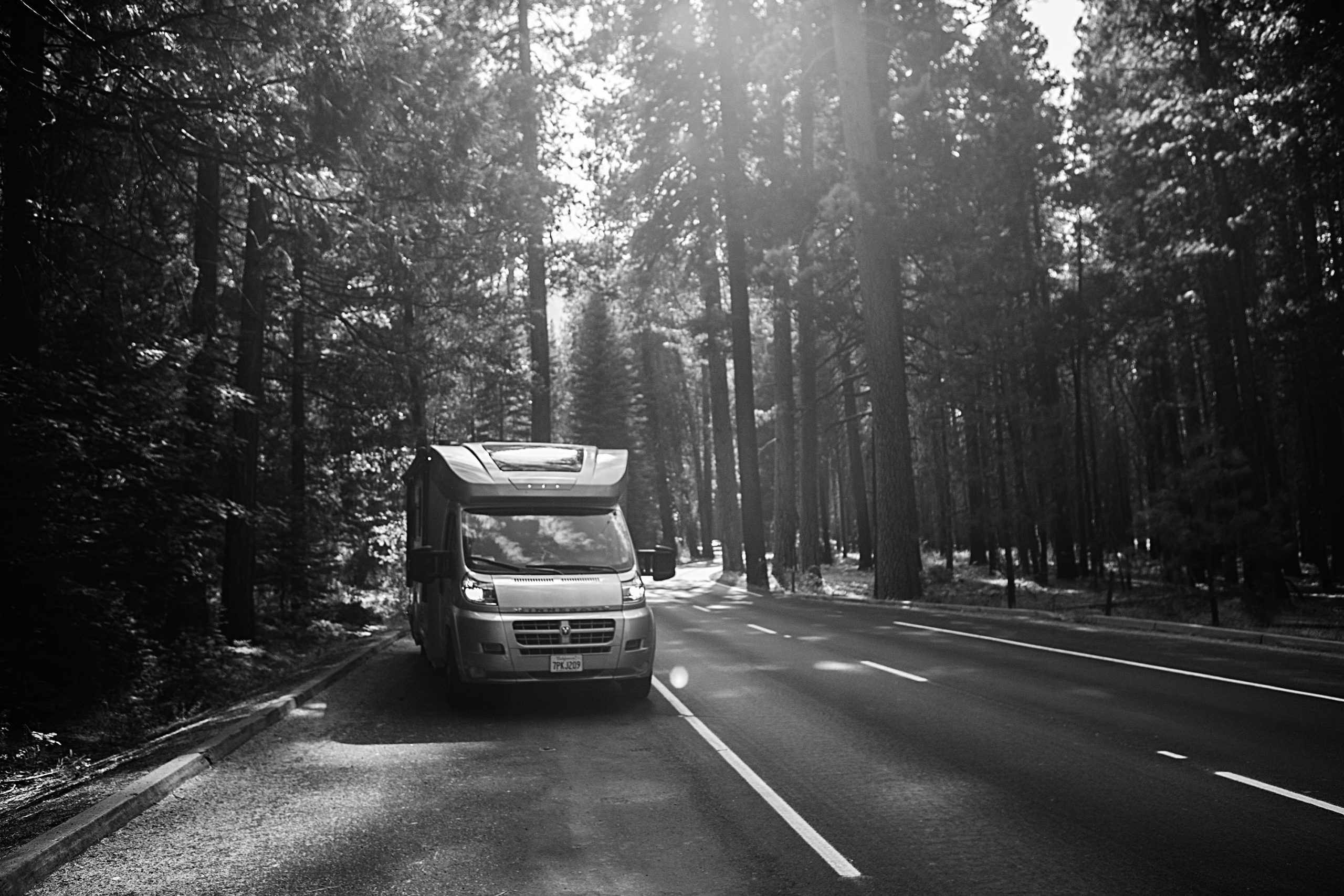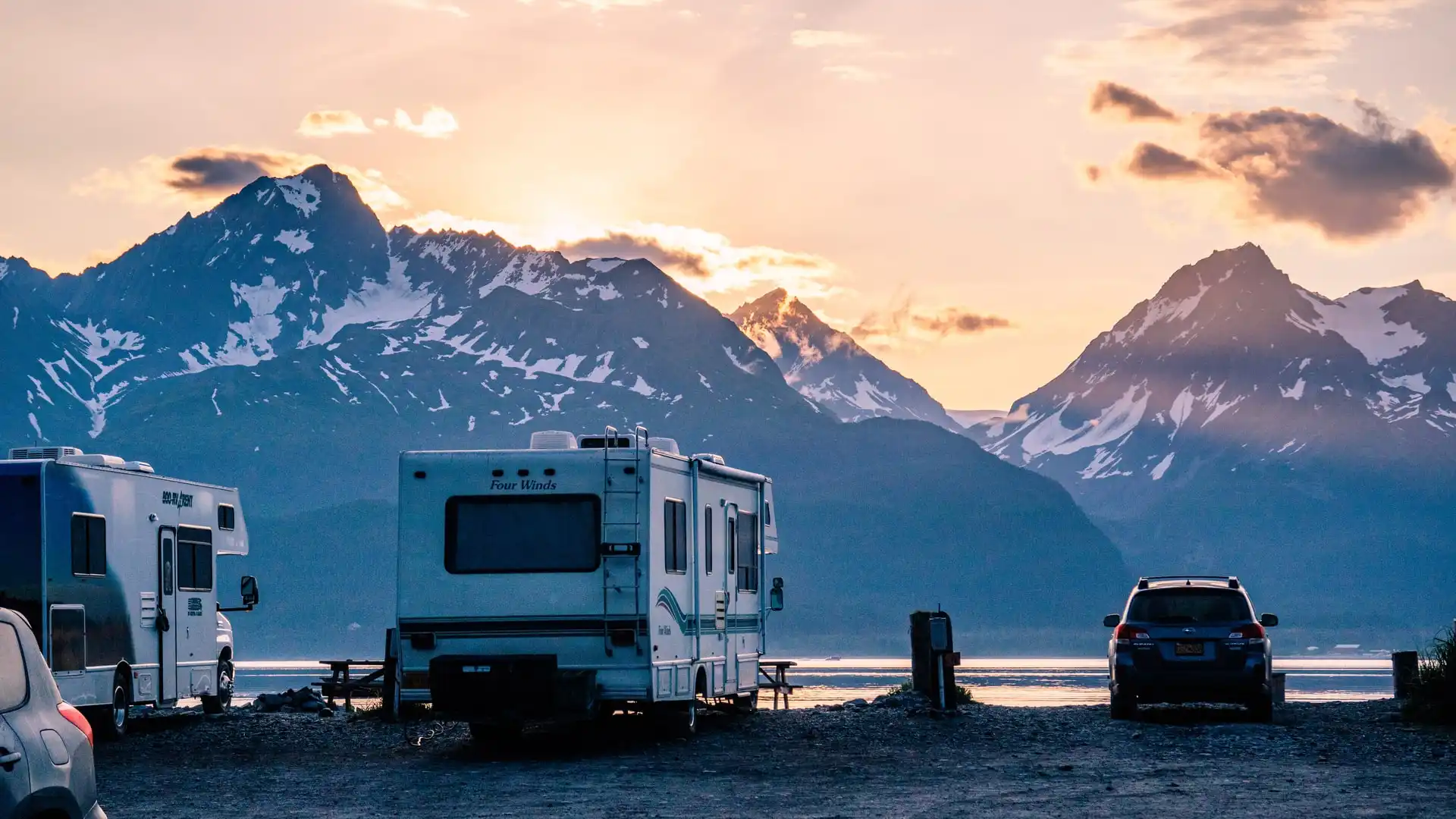Taking an RV road trip has many advantages over other vacation alternatives. There is always something new or unexpected to see along the way from Point A to Point B. Then again, why limit yourself to Point B? Add a Point C, D, Q or V! Road trips can have any number of “destinations,” and half the fun is in the journey itself. RVers avoid sleeping in a new hotel bed every night and have a homey oasis waiting for them wherever they go. It is the ultimate way to travel.
While an RV road trip is already a savings over many other forms of travel, the costs can still add up. Rental fees, campground stays, fuel, food, and attraction costs may not be avoidable, but there are ways to reduce them to make your trip even more affordable.
Go Small and Light
While renting a large trailer or motorhome may seem more luxurious, the cost of renting and driving an RV increases or decreases in proportion to its size. A smaller rig simply costs less. You might be surprised how comfortable you can be in a smaller space, and how little you actually need. Many RVers find that limiting their space inside helps them to enjoy spending more time outside. If you spend most of the day outdoors, all you really need is an RV big enough for sleeping and keeping your stuff dry.
Speaking of stuff, avoid filling all those cute little cabinets and closets with things you don’t need. The added weight makes it more expensive to drive or tow. Just because there is space for it doesn’t mean it should come along.
An added advantage of a smaller RV is that you have access to many roads, parks, and locations where bigger rigs are not allowed. Think small to see more and save more.
Improve your Fuel Economy
The biggest way to reduce your fuel costs is to choose a smaller, lighter RV. There are also ways to improve fuel economy on any size rig. Properly inflate tires, both on the vehicle you drive and on trailers, and check tire pressure regularly. Remember that most vehicles are designed to be aerodynamic, so avoid adding anything that sticks up from the top or out to the sides that could add wind resistance.

Reducing driving speed is another easy way to improve fuel economy. Slow down and enjoy your trip! Speed can also be a safety concern since RV tires have speed ratings (often 65mph) that should not be exceeded. If your vehicle has an “instant fuel economy” display, watch this number at different speeds to find the ideal cruising speed and maximize the vehicle’s fuel economy.
Avoid Tolls
Toll roads are common in many parts of the country. Since toll rates are typically calculated based on the number of axles, a motorhome or trailer often costs considerably more than the price posted for passenger vehicles.

Plan your route accordingly. Use a toll calculator ahead of time to decide if you are willing to pay the toll. Most navigation apps have an “avoid tolls” option when planning your route. Compare your driving route with and without tolls to determine if the toll road will save enough time or distance to be worth the cost.
Sometimes tolls are unavoidable, but the pinch can be reduced with prepaid transponders such as E-Z Pass in the East Coast and Midwest regions.
Use Memberships Wisely
Sometimes spending a little money can end up saving you a lot more. The right memberships can save you a bundle on camping and attractions, but the wrong ones can be a waste of money. Do your homework to find out which memberships are right for you.
There are different types of campground memberships. Some are chain specific and offer discounts per night, such as KOA’s Value Kard. For an annual cost of $30, this card saves 10% off your rate plus some other perks. It typically pays for itself after 7-10 nights, so it’s worth it if you plan to stay at KOA parks frequently.
Other campground memberships, such as Passport America or Good Sam, charge a similar annual membership fee and offer discounts per night at a variety of affiliated campgrounds. Good Sam members also receive discounts on fuel and shopping at participating chains. Thousand Trails offers a different membership model, charging a much steeper annual fee for the benefit of staying for free (with some restrictions) in their network of campgrounds.
Memberships can also save you money on attractions. Those who frequently visit national parks would benefit from purchasing an America the Beautiful annual pass (https://www.recreation.gov/pass/). Joining a local museum or zoo can give you free or discounted entry into other museums or zoos across the country. Learn more about the Association of Zoos and Aquariums (AZA) Reciprocal Program, the Association of Science-Technology Centers (ASTC) Passport Program, or contact your favorite museum to find out if they participate in a nationwide museum network.
Save on Food
Food can be a major expense while traveling. Eating every meal in a restaurant can do some serious damage to your wallet, not to mention your waistline. While there’s nothing wrong with indulging a little bit on vacation, using your RV’s kitchen can help keep your food budget from getting out of control.

Plan ahead to avoid extra detours along the route in search of a grocery store. Finding a specific item you’re looking for in a small-town store can be difficult and expensive, so stock your refrigerator and pantry with everything you need. Having a meal plan reduces impulse purchases and last-minute take-out meals. Finally, stock up on your favorite road trip snacks and drinks ahead of time to avoid buying smaller quantities for a higher price at a gas station.
Eating better during your trip will leave you with more money to spend on other things and more energy to truly enjoy the ride.
Boondocking – Camping Unplugged
Campground costs represent a big portion of an RV road trip budget, but there are free alternatives to finding a campground every night. Consider boondocking, or dry-camping, occasionally to reduce costs. If your rig is properly equipped for it, you could even avoid campground costs altogether.
For a simple overnight stay, many stores will allow you to pull into their parking lot to sleep for the night. Walmart is well-known for this, but chains such as Cabela’s and Camping World are even better options if you can find one nearby. Many of these camping-focused stores offer designated RV parking lots as well as dump stations and places to fill freshwater tanks. It is always wise to confirm your stay with a store manager before settling in for the night.

When it comes to longer stays, dispersed camping on public lands is a wonderful way to save money while enjoying a more natural environment than most campgrounds can offer. It is not always easy to find these boondocking spots since public lands are managed by a variety of different government agencies. RVers who boondock frequently rely on websites such as Campendium to not only find great spots, but read reviews from other campers and learn about accessibility, cell signal, and other helpful information.
Extended boondocking requires either a generator or solar panels to recharge batteries. Many Outdoorsy owners are willing to rent these with their RVs for an additional fee. For the chance to save campground fees and get off the beaten path, this is an option worth considering.
An RV road trip is a great way to get away from it all and explore new places. It also gives you a lot of budget flexibility and can be surprisingly affordable! Keep things simple and plan ahead to keep costs in check. Let Outdoorsy help you find what moves you – and fits your budget!








